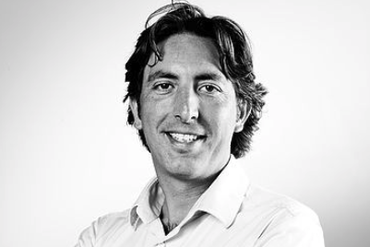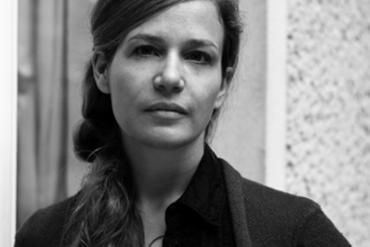Innovation Summit: Interview with programme partners
Today starts THE ARTS+ 2018 and also, the Innovation Summit will take place. Before the summit, we talked to Julia Pagel, Secretary General at NEMO and Harry Verwayen, Executive Director at Europeana Foundation, which are the programme partners of the Innovation Summit.
Harry Verwayen


Julia Pagel
Julia, Harry, please introduce your institutions briefly.
Julia Pagel: The Network of European Museum Organisations (NEMO) was founded in 1992 as an independent network of national museum organisations representing the museum community of the member states of the Council of Europe. Together, NEMO’s members speak for over 30.000 museums across Europe.
NEMO ensures museums are an integral part of European life by promoting their work and value to policy makers and by providing museums with information, networking and opportunities for co-operation. NEMO supports European museums in their aim to learn from each other by networking and co-operation and shows them ways to participate in the existing European cultural policies in its function as an information channel between European institutions and museums. Believing that museums are key players in safeguarding cultural heritage and central figures on the way for a better understanding within Europe, the network fosters European policies that help museums in fulfilling their role as keepers of cultural heritage by promoting their importance to European policy makers.
Harry Verwayen: Europeana is Europe’s platform for digital cultural heritage and an initiative of the European Union. From books, photos and paintings to television broadcasts and 3D objects, Europeana Collections provides online access to a vast store of cultural heritage material from across Europe. Our mission is to ‘transform the world with culture’, and we’re driven by seeing digital material from Europeana Collections being used to transform and invigorate education, research and creative industries both within Europe and beyond.
Why do you think that acting on a European level is so important for cultural heritage institutions?
Julia Pagel: I think that acting together on a sector level, be it on a local, national, European or even international level is crucial for cultural heritage organisations. Traditionally, the arts and culture do not have a very loud voice when it comes to politics and conveying to other stakeholders how important cultural heritage is for Europe, for society, for our future generations.
Networks such as NEMO enable collaboration and synergies within the cultural sector by stimulating, facilitating and coordinating contacts and enhancing cooperation among members, they offer a fertile field for cultural professionals to enlarge their professional activities, broaden perspectives and exchange knowhow, they create a meeting place, or a reference point, they provide information and stimulate research and knowledge generation, they create training and networking opportunities, they create an added value for one’s organisation by creating structural relationships with colleagues and, last but not least: they advocate and promote as sector favourable policies and contribute to the cultural debate on European or international levels.
Harry Verwayen: We have to cooperate which each other across countries and across specialisms so that the data that we all want to see shared and used is standardised. We need legal standards for licensing and technical standards for metadata to be interoperable. When we build those standards together, we can create data that flows on the web, whatever the platform or the system.
Europe is a fantastic place to start doing that because we already have so much in common with each other, including some of the regulatory frameworks we need to make standards work. But ultimately, we need even more than that, we need a truly global effort.
You are both partners of THE ARTS+ Innovation Summit, and more specifically of its „Break-out session on cultural heritage”(Öffnet neues Fenster). If you could take a look into the future, what would the museum of the future ideally look like – taking into account all the challenges that new technologies like AI, VR or 3-D printing pose?
Julia Pagel: To me, the ideal museum of the future knows exactly its own profile, its audiences and target groups and it has defined and clear mission what it wants to be and how it wants to achieve that. In other words: There is no ideal type of museum of the future, because every museum has its own identity, its specific collection and its particular communities. Knowing who you are and what you want is the basis to think about the necessary tools, methods and instruments how to achieve these objectives. This can include new technologies, a mix between virtual and analogue approaches, the decision to make your entire collection available online for free re-use or to create a (virtual or analogue) maker space to work with your collections.
Harry Verwayen: A place for convening. A place I feel at home and invited. A place where I know our shared heritage is kept safe from harm and made available for us. A place where I am invited to interrogate the art in many different ways. I want to use a range of technologies like AI and VR, knowing that they’re non-invasive, that they don’t harm the object.
I also want it to be a place where I am encouraged to interact, to learn, to share my feelings, create new things, express myself. But I also see a non-place. I will find the museum far outside the museum’s walls on shared platforms.
What support do cultural heritage institutions need most urgently to get to this future?
Julia Pagel: Cultural heritage organisations such as museums need a 3-fold support to become fully relevant actors in a constantly changing digital and technologically driven society:
They need training to build their technological and digital capacities at every level of museum work. A digital museum does not only mean to have a digital collection. The digital sphere reaches into every museum department, and it needs to be considered as a cross-cutting theme in the whole structure of the museum.
They need legal support and experience to be able to fully make their collections and resources available online. Legal uncertainties and regulations such as for example the orphan works directive put museums, especially the smaller ones that do not have a legal advisor in house nor the budget to externally consult with an expert, need training and/or central knowledge hubs to help them overcome those legal barriers and uncertainties. This also requires an EU wide technology neutral and legally harmonized digital environment.
They need appropriate funding to develop new technologies and partnerships with other sectors. Project-based funding mostly means short-term funding. The framework that museums should develop however means long term commitment. Taking care and making the most of digital collections is an ongoing process, developing cooperation with different sectors for meaningful initiatives require trustful and long term agreements. Funding for these initiatives need to be more flexible and answering to those specific demands.
Harry Verwayen: It always comes down to investment. Investment to develop capacity and experiment with new technologies such as machine learning. Investment comes when policymakers are convinced by the return. Europeana’s Impact programme is helping cultural institutions to work out and articulate the real world value of their efforts, to build an evidence base for just that kind of investment.
Thank you very much, wishing you a successful Innovation Summit!
Pictures: © Julia Pagel, © Harry Verwayen
